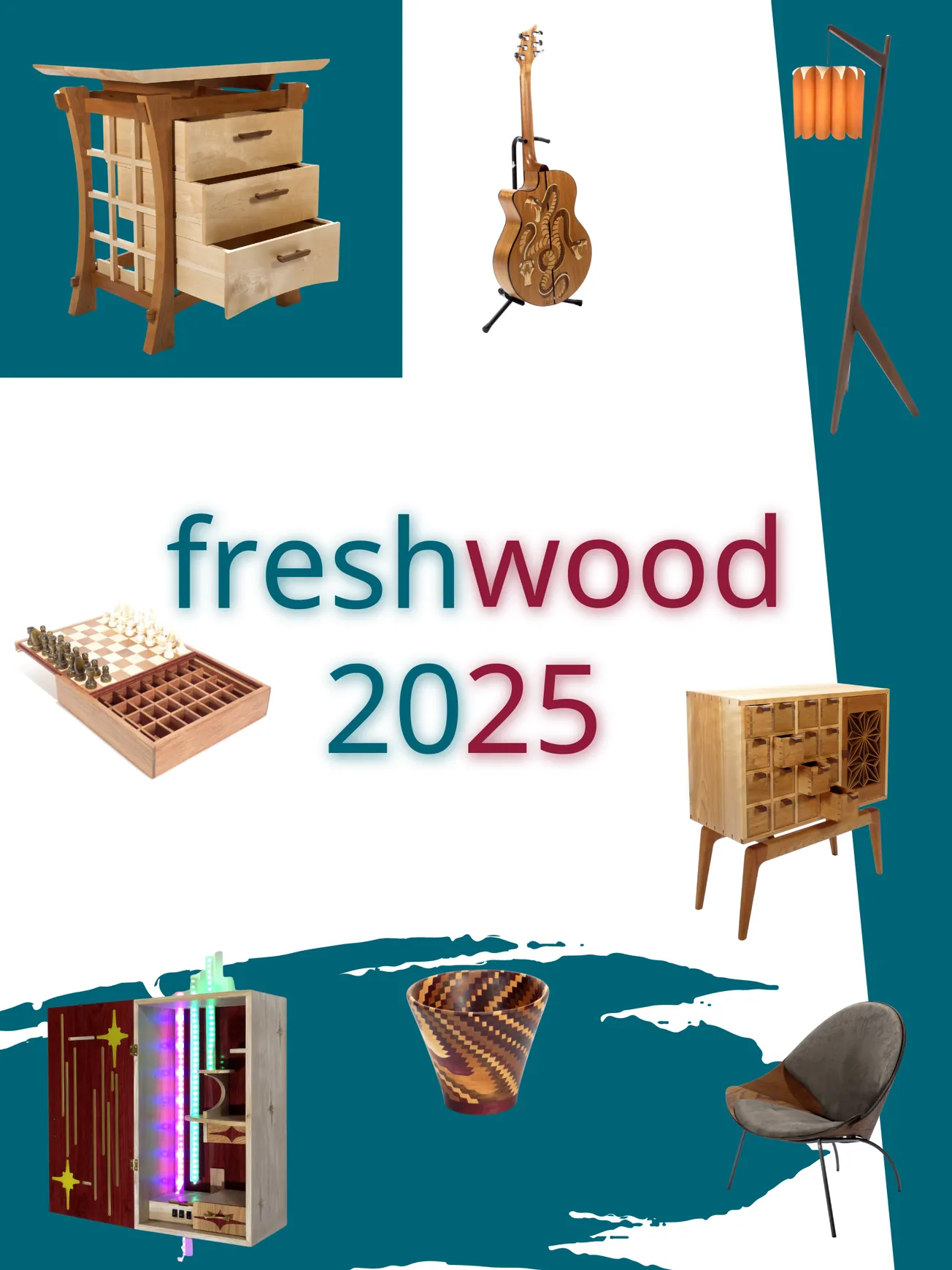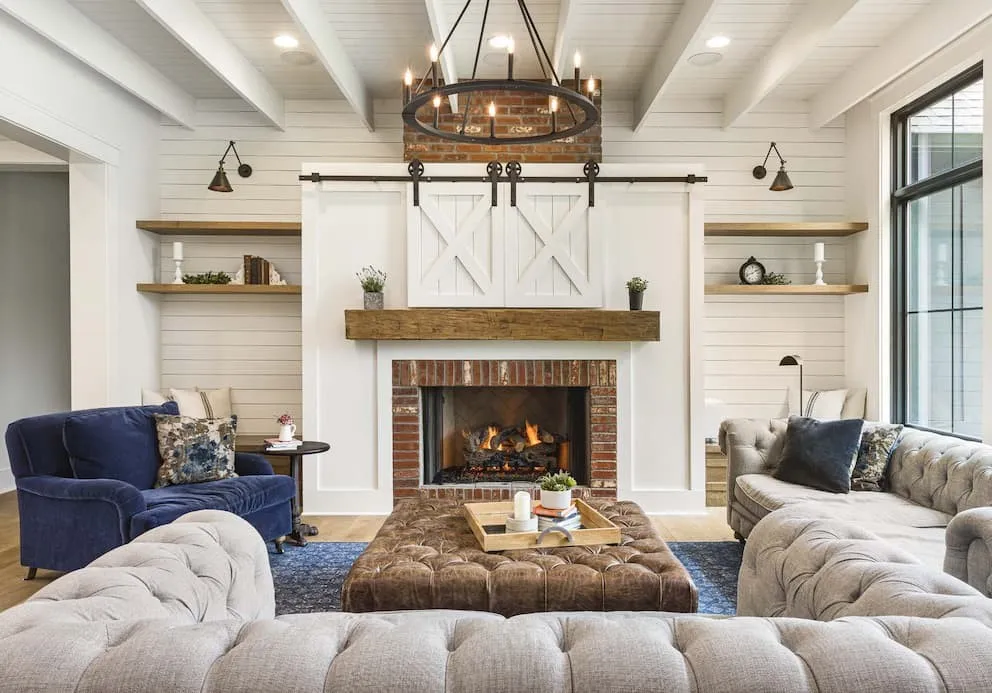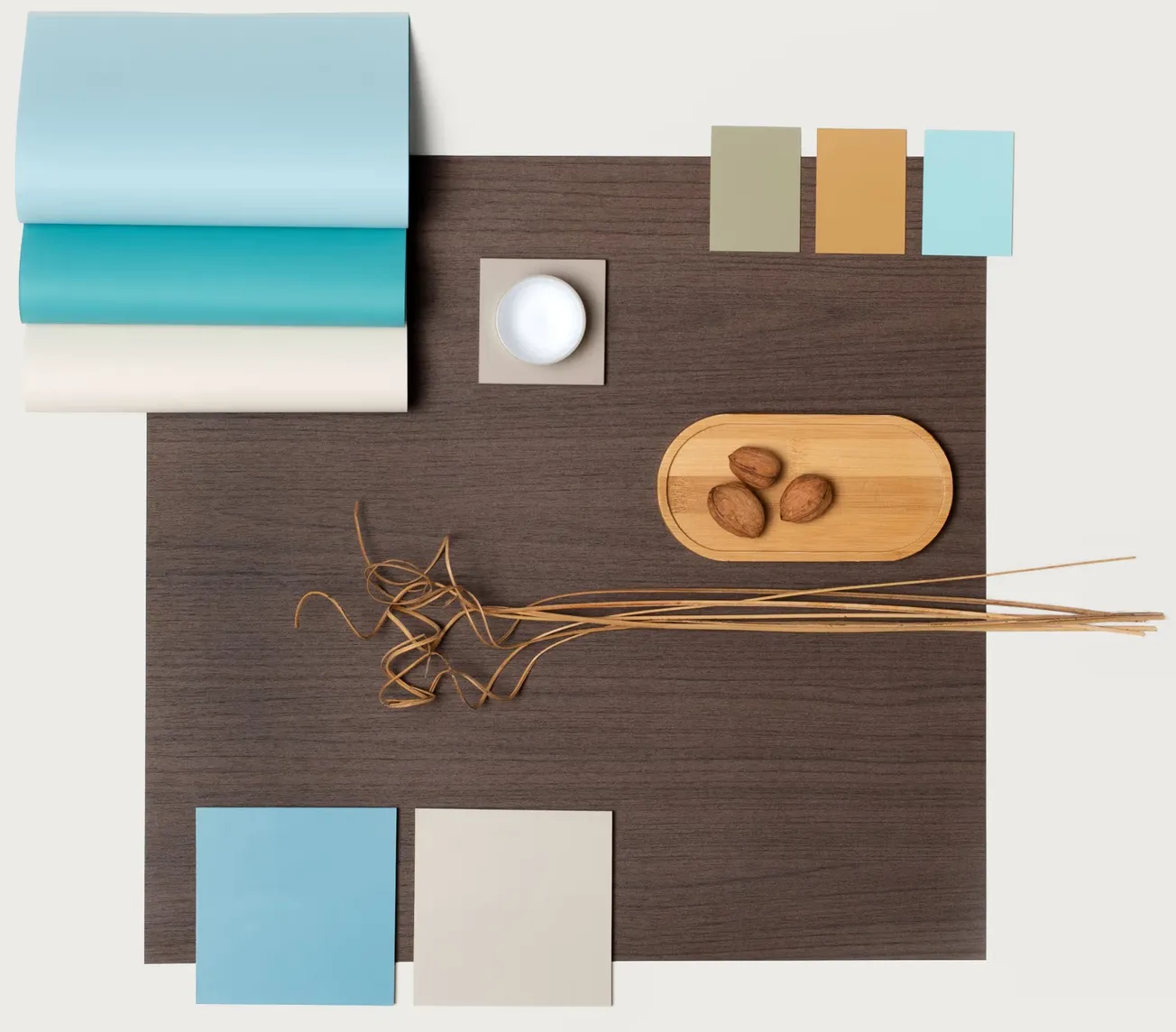Table of Contents
At the Show
by Suzanne VanGilder
Innovations in materials, geometries, texture and technology characterized the 2014 ICFF and NYCxDESIGN events. Here Aperiodix non-repeating concrete wall tile system brings tessellation and gray scale to surfaces.
Composite panels and decorative surfacing materials are high-tech products. Processing them into finished goods involves even more engineering. Yet it is important to remember that manufacturing design-driven consumer products is an extension of the global fashion industry.
With regards to furniture, it is tough to beat New York City in May when looking for emerging design practices spanning many disciplines. For 26 years, the International Contemporary Furniture Fair has served as North America’s platform for global design. The event is held in conjunction with NYCxDESIGN, New York City’s official citywide celebration intended to establish the city as the design capital of the world.
Surface & Panel was there this May, walking the show and touring exhibits staged throughout New York City. From artisans and collectives showing original work to receptions hosted by some of the biggest names in furniture, trendsetters and design hunters from around the world converged. It is impossible to report on every great idea presented. Indeed, considering the diverse design tastes across North America, it is even difficult to relay which fashions are poised to sweep the market. Yet there are many interesting trends – often driven either directly or indirectly by technology – that are shaping the way people think about interior spaces. The following pages contain a short tour of furniture and lighting.
Finding Furniture
One noticeable shift is designers moving away from untouchable ultra-modern to a more organic, real, even retro sensibility in both shape and materiality. The Osidea collection plays with these concepts with classic bent plywood, soft edges and shapes that invite interaction.
A resurgence of smaller-batch design is evident in furniture across a broad spectrum of designers. On one end are the traditional craftspeople like Michael Garman who are rendering pieces by hand from natural materials.
However, the increasing availability of flexible technology, such as CNC machines, is putting the power of agility in the hands of many. The capability to precisely process fosters new mash-ups of materials. Patrick Weder Designs incorporates walnut and Corian into his credenzas for an intriguing and sophisticated look.
Even in large-scale production, technology makes it possible for designers to experiment with a myriad of aesthetics even within a single engineered material. 2014 marks the 10th anniversary of Wilsonart® Challenges, a student design competition that engages participants to create chairs that celebrate the richness of laminate surfacing materials without the restraint of mass production. Wilsonart selected the College of Architecture at the University of Houston to host the 2014 Challenge. The competition unfolds as a semester-long course, this year taught by Professor Jeff Feng and Grace Jeffers, design historian and materials specialist. The winning chair, “Infinite,” was designed by Jenny Triue. It epitomizes mid-century modernism through its unique structure, bold colors and mixing of materials. 
Perhaps the most eye opening example of flexible technology and small batch production was the exhibition Joris Laarman Lab: Bits and Crafts, at Friedman Benda Gallery. The lab collaborates with craftsmen, scientist and engineers to exemplify the emerging technologies of CNC systems, 3D printing, robotics and simulation software. Laarman’s exhibition was a testament to the seismic impact of digitalization on the design world. It explored the ways in which the digital revolution affects how physical objects are designed, manufactured, distributed, protected and recycled. The four facets of the exhibit: Maker furniture, Micro Structures, Vortex and Spirographic – are each the culmination of massive research, cutting edge fabrication, handcraft and personal aesthetic.
 Two of Laarman’s themes used the archetypical form of the chair to explore technology. Read more about them on the following page.
Two of Laarman’s themes used the archetypical form of the chair to explore technology. Read more about them on the following page.
Micro Structures: Representing Laarman’s delve into the deeper facets of 3D printing furniture, this group of work, including the Gradient Chair, is engineered on a cellular level. Elaborating on a long history of polyurethane use in furniture design, the Gradient chair is made of 3D printed thermoplastic polyurethane modulated at its structural points to be solid, and at the open parts, to be flexible and soft like foam that is engineered on a cellular level.
Maker: Born out of disagreement with the limited bounding box and poor material choice of many today’s digital fabrication methods, Maker pieces are built from many parametric parts engineered to fit exactly like a 3 dimensional puzzle. Multiple materials (resin, solid woods, plastics, metals) and differentiated shapes (triangular, hexagonal, figurative, pixilated) respond to strength and aesthetic necessities, while the multiplicity of small elements enable greater freedom and complexity of shape. Laarman plans to publish the blueprints on the Internet for free, leaving the design unlocked for people to modify. The Maker puzzle chair is the world’s first crowd fabricated prototype also available for home printing.
In general, metal aesthetic is moving away from stark stainless to oxidized black and brass. A similar softening is happening in finishes, where gray scale is prominent and textures tend toward matte, tweed and leather.
Light Bright
Advances in LED technology make it possible for designers to do more with light than ever before. This category is exploding with imagination as designers gain unprecedented control over the color temperature of the diode. More so, the new technology means that designs are no longer beholden to accommodating a bulb or a tube, and those classic shapes almost take on purely iconic meanings. The King Edison pendant Lamp designed for Mineheart combines the pure simplicity of an Edison light bulb with the romance and glamour of a  King’s chandelier.
King’s chandelier.
See more intriguing examples of creative lighting designs
on the following pages.
Many designs set out to domesticate light. The Black and Blond by Liquid Design of West Sussex captures the bulb in wood and dark metal to bring light to earth.
The Bel Occhio by Pablo Design is the opposite, a study in weightlessness and transparency. The hybrid design has a suspended inner column that creates focused illumination while its surrounding shell produces a transformative ambient glow. Designer Pablo Pardo also takes the fusion of furniture and light to the Light Bench, a fully dimmable platform for display or seating.
 There was no shortage of flat lighting on display at ICFF, often presented in gradated shapes and sizes. Koncept lighting showcased several tabletop lamps including the Mr.n LED Table Lamp is arch-shaped. Its advanced panel technology causes the entire outer surface of the lamp to glow with soft, warm, omni-directional light, perfect for difficult-to-illuminate spaces.
There was no shortage of flat lighting on display at ICFF, often presented in gradated shapes and sizes. Koncept lighting showcased several tabletop lamps including the Mr.n LED Table Lamp is arch-shaped. Its advanced panel technology causes the entire outer surface of the lamp to glow with soft, warm, omni-directional light, perfect for difficult-to-illuminate spaces.
Koncept's Lady7 desk lamp boasts a whispy-thin telescopic silhouette and step-less dimming.
LED, in both bulb and flat panel, was ubiquitous at the show from floor and table lamps, to pendants, wall sconces and chandeliers. One of the most charming designs, and certainly the most interacted with lamp at the show, was the Float Chandelier by Bower Studios. Built with a series of LED lamps that are magnetically pulled outward towards a central ring from above and below, the lamp creates a magical tension in space. The Float Chandelier feels otherworldly, seemingly breaking the laws of physics. It is the first piece in an upcoming series from Bower that will explore the sense of weightlessness that is possible through magnetic attraction and repulsion.
LED lighting enables designers to integrate illumination into a wide array of applications. Functional hardware is increasingly used for accent or interior lighting in furniture. Now the extreme flexibility of the technology is finding its way into surfaces proper, from tiny artistic pin-pricks of light that enhance a graphic to LED illuminated wallpaper. This example, by London-based MeyStyle, is adding another dimension to the medium. Not only does LED enhance the depth of pattern, it turns the wall itself into a light structure.






